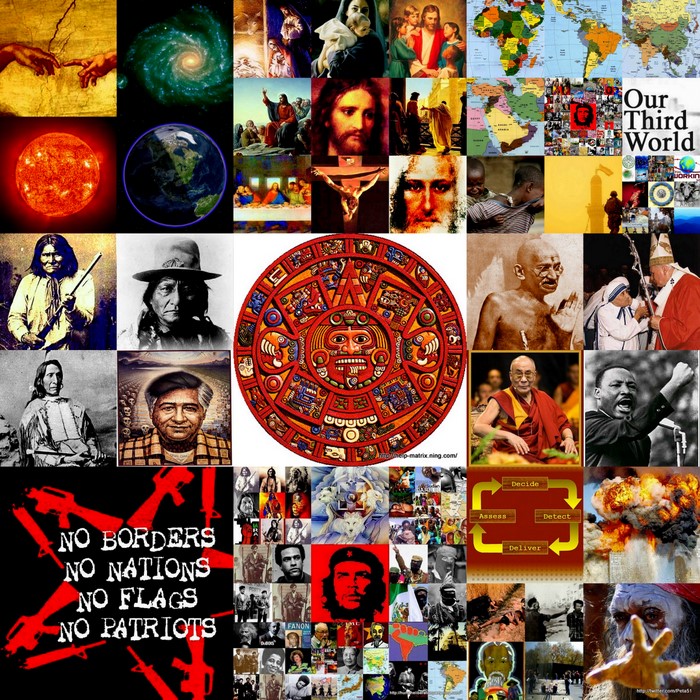Note: See Website for Direct Links to Stuff. ~ PAL

The Industrial Workers of the World gather in the North end of the square in 1914.(Courtesy of the New York Public Library)










On May 1st—or May Day—Occupy Wall Street is hoping to make a big splash with a possibly massive General Strike, as well as a series of protests/marches that will come to a head that afternoon in Union Square, where a lot of OWS activity has been centered lately. And that's both a good thing and a bad thing according to local historians: "It's a good place historically," Lisa Keller, author of Triumph of Order: Democracy and Public Space in New York and London, says. "But it is a very bad place physically."
Exactly what will happen and who will participate on May 1st, 2012, is still unclear, but Union Square will definitely be a big part of the story, as it has been for well more than a century. When it comes to public gatherings in New York, Union Square—which was NOT named for labor or the Civil War, but for its position at "the union of the two principal thoroughfares of the island"—has been "the place to be" since people gathered there to celebrate the Croton Aqueduct in 1842.
The space started being used for political rallies soon after notable Labor Day marches in the 1860s (the traditional spring festival of May Day became International Worker's Day to many after the 1886 Haymarket incident in Chicago), but Keller argues that "it is really only in the beginning of the 20th Century when the use for political demonstrations really began." Specifically, the IWW (Industrial Workers of the World) starts to have a lot of events which "begin to identify the square with working class politics more forcefully."
Another reason for Union Square's growing political prominence was because there simply weren't that many places where large groups could gather, especially as Tompkins Square fell out of favor and use by the 1870s. So why might Union Square be a bad place physically to bring a giant protest this year? Because the Union Square we know is not the same one from 100 years ago. The park has been redesigned several times and the last one, in the 1980s, "essentially removed all of the open space and put in grass." Seriously, just look at the pictures. And it isn't just the redesign that's trouble. With all that grass, the square is under the aegis of the Parks Department which means, as Keller puts it, "they fall under Parks Department guidelines and limitations, which means you can't do in them what you could do on a city street like have a meeting." A major difference from the marches of yesteryear.
Over the years there were quite a few major rallies in the Square both on May Day and on Labor Day, which has historically been a bigger worker's event in the States. But because of its connections to communism, May Day has had a tough row to hoe here, with the holiday being renamed Law Day, Americanization Day and Loyalty Day at various points.
May Day started to become an issue in the 1920s and 30s as Communism gained political traction. One notable incident occurred in 1930, when there was an attempt to have both sides of May Day represented at the Square—the city allowed two rallies to be held in there at the same time. On one side were the "Communists," and on the other were Veterans of Foreign Wars. There were 1,000 policemen on duty and things, of course, got out of hand (before that, though, this awesome newsreel footage was taken). "There was a melee," Keller tells us, "and the whole thing was broken up because there was a perception of disorder. That May Day set a bad precedent."
Although there were later May Day parades, it was increasingly painted less as a 'communist' event and more a 'working man's' event. The 1937 parade was called "the biggest May Day event in New York" history—that march was an eight-hour parade! But, as Keller notes, that long march set another precedent because the police kept the group moving the whole time: "They let them convene and move, but they don't let them stop. By keeping people moving they prevent a political aggregation of people—and that's a problem."
By 1939 May Day had been turned into an even less of a Communist-related event, and more of a working man's celebration. The demonstrations pretty much stopped once World War II kicked in, staying small-to-nonexistent due to McCarthyism. Things only really started to pick back up for political demonstrations in the area when it was the scene of draft card burnings in the 1960s. The park was still a major site of political activity (see, 2010's May Day pro-immigration rally), just not necessarily of labor activity.
So what happens when OWS tries to bring the focus back to labor and the park on May Day? We're all going to find out. But Keller, at least, thinks we may be at a "critical point" in how the city deals with these kinds of events. After all, "the city has always been tolerant of civic and celebratory events, but not very tolerant of political events. That has been since the 1870s. [The city] did not want disorder. Not because of repression, but because New York was tremendously preoccupied with commercial success and making sure that nothing impeded on the city's ability to prosper."
Contact the author of this article or email tips@gothamist.com with further questions, comments or tips.
41http://gothamist.com/2012/04/19/may_day_flashback_why_union_square.php#photo-1
+++++++++++++++++++++++++++++
HELP-Matrix Humane-Liberation-Party Blog
http://help-matrix.blogspot.com/
Humane-Liberation-Party Portal
http://help-matrix.ning.com/
@Peta_de_Aztlan Blog
http://peta-de-aztlan.blogspot.com/
On Twitter @Peta_de_Aztlan
+++++++++++++++++++++++++++++


No comments:
Post a Comment
Please keep comments humane!